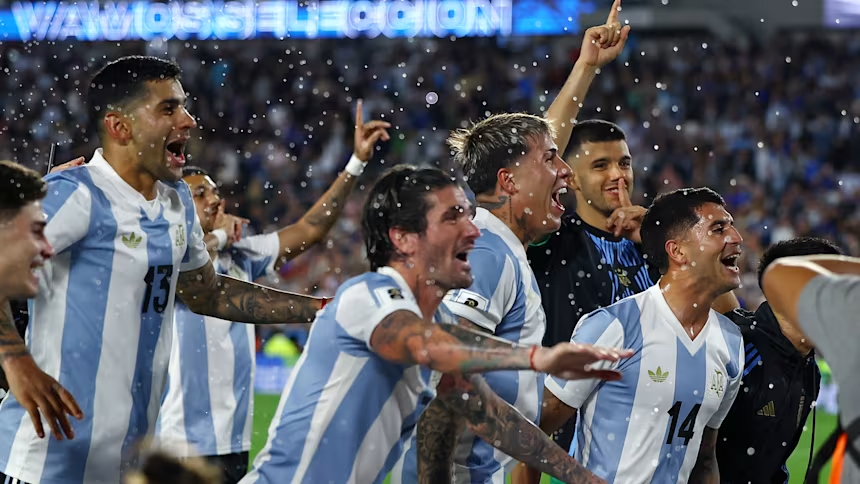Sing the lyric: “Don’t be fooled by the rocks that I got” to any millennial, and chances are they’ll pipe back: “I’m still, I’m still, Jenny From The Block”. Twenty years on from its release in September 2002, Jennifer Lopez’s song Jenny from the Block is still just as infectious an earworm, and has pulled in 162 million views on YouTube and counting.
It’s one of Lopez’s most famous tracks, and arguably her defining one, embedding her carefully crafted brand and appeal: yes, she was a stunning and successful Hollywood star, but, she wanted to remind us, she was also just the girl-next-door. Albeit one with a healthy appreciation of irony, given the famous video in which she is seen casually hanging out with her fellow A-lister boyfriend Ben Affleck, rolling around in their swimwear on a yacht.
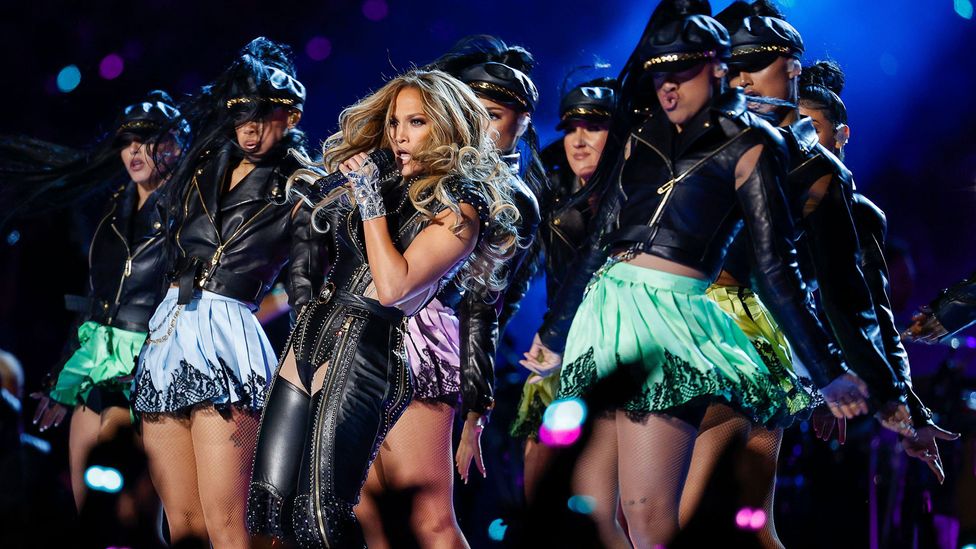
The song, the lead single from her third album This is Me… Then, was the creation of Andre Deyo, a songwriter who was inspired by Lopez’s tell-all interview in May of the same year with Oprah Winfrey. “Originally, it was called Jenny from the Bronx,” Deyo tells BBC Culture, “But it was changed in the end. I also wanted to give her a new nickname, like J-Lo [which she had used for the title of her second album], so I wondered if she would like being called Jenny?”
From that video to the insanely catchy flute riff – sampled from Enoch Light’s 1975 disco track Hijack – it was one of the year’s most talked-about songs, and, in the US, spent a total of 16 weeks on the Billboard charts. What also set the track apart from a lot of other big mainstream pop songs was its specificity in showcasing the autobiography of its singer, Lopez, a second-generation immigrant from Puerto Rico, who grew up in the Bronx neighbourhood of New York, which is mentioned 29 times in the song. “People like to support places as well as they like to support people, so I felt there would be a big connection with Jennifer and the Bronx, as it’s the home of hip hop,” explains Deyo of giving the song that geographical emphasis. On Lopez’s part, it also reflected a drive to link back to her heritage that has defined her as a performer since she was young.
Lopez’s rise to what can now be regarded as a global icon has been a long one, but even now, three decades into her career, having sold 80 million records, recorded eight albums and appeared in more than 40 films, she still struggles to receive her dues. That was evident in the recent Netflix documentary, Halftime, which followed her during a busy career period in 2019 and 2020 when she appeared in a critically acclaimed role in the film Hustlers, and performed at the 2020 Super Bowl half-time show. However, at the same time as celebrating both these achievements, it highlighted the pushback she still faces from the industry. Respectively, we see how she fails to receive a much-expected Oscar nomination for Hustlers, and is made to share the Super Bowl stage with another Latina performer, Shakira, a decision about which Lopez doesn’t hold back: “it was the worst idea in the world to have two people do the Super Bowl!” she says on camera. Through a mixture of chance and design, the documentary seems to pose the question: is Lopez Hollywood’s most underestimated star?
Her hard-won rise
From a young age, Lopez has always battled a certain scepticism: she’s talked about how, as a late teen, she was challenged by her parents David and Guadalupe when she decided to drop out of college, having originally envisioned she might be a lawyer, to pursue her dreams of being a performer. But a stint as a backing dancer in the early 1990s for MC Hammer and New Kids on the Block secured her place as one of the Fly Girls, a dance troupe on the TV comedy sketch show, In Living Colour.
From there followed various minor TV roles, before two high-profile forays on to the big screen that were nevertheless flops – action thriller Money Train in 1995, and comedy Jack with Robin Williams a year later. But then in 1997 came the role that arguably made her: starring as the late Selena Quintanilla-Pérez in Selena. Quintanilla-Pérez was a Mexican-US singer who was on track to becoming one of the biggest cross-over Latin American stars in history, before she was shot and killed, aged 23, in 1995 by the president of her fan club, Yolanda Saldívar. When Lopez became Quintanilla-Pérez in the film, she was portraying someone who was an important forebear of hers (despite Quintanilla-Pérez being younger, in fact), which perhaps explains the sheer conviction of a performance that was widely lauded and described as “incandescent” by the LA Times.
Film critic and co-host of BBC Radio 4’s Screenshot Ellen E Jones agrees that alongside making Lopez the first Latina to earn $1 million dollars for a movie, Selena remains one of her defining career moments: “Jennifer’s real superpower is megawatt charisma. That’s the reason you can’t take your eyes off her when she’s on screen. This role was a savvy move because it positioned her on a level with this beloved Latina icon, suggesting that she too was an icon in the making, but it also affirmed her Latinx identity, and won her the loyalty of that significant section of the US and global audience. It highlighted that her charisma is rooted in self-knowledge, self-assurance and linked to her strategic nous.”
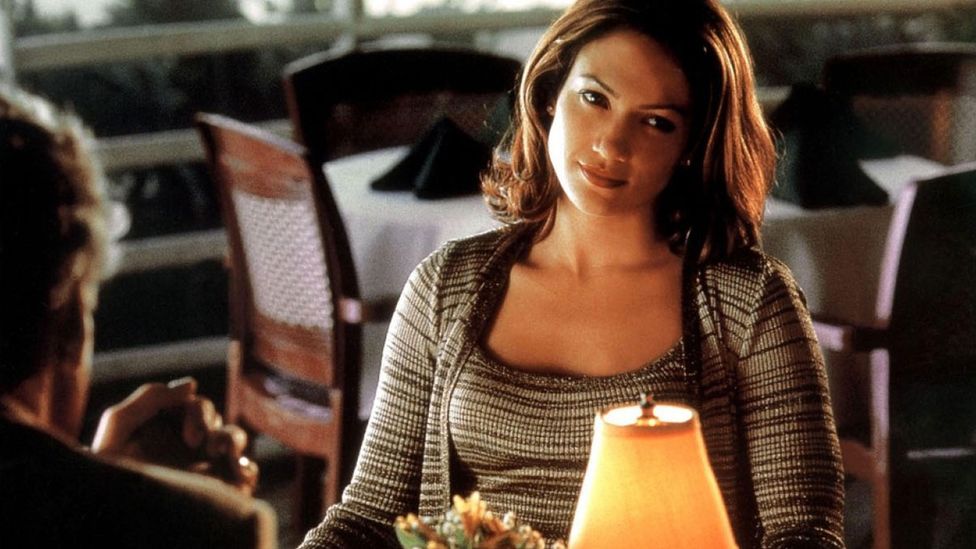
Selena’s director Gregory Nava later claimed that shooting one of the scenes, where Lopez performed as Quintanilla-Pérez to a 35,000-strong crowd in Houston “gave her the idea to have a musical career because before that, she hadn’t thought of it”. It was also the first time Lopez’s name was mentioned in the same sentence as the Academy Awards – although in the end no nomination came her way.
Nevertheless, the stage for her multi-discipline success was set, and in June 1999, her debut album On the 6 was released, with the lead single If You Had My Love becoming a number one song in the US, followed by Euro-dance banger Waiting For Tonight, and Let’s Get Loud, a number originally written by Gloria Estefan. The cover art for the album showed a casual Lopez, dressed in underpants and a long sleeve top, hair in a messy ponytail, sitting on a sofa. It suggested a girl-next-door image, which, as with Jenny from the Block, was perhaps intended to set off her already-established reputation as the glamorous party-girl. That part of her persona was immortalised in the public imagination a year later at the 2000 Grammys when, attending with her then boyfriend P Diddy, she wore that famous plunging, palm-tree-patterned Versace dress. Twenty years on, it remains one of the most cited red-carpet looks ever.
Similar to the album art, meanwhile, there was a pleasing casualness to her vocals that some critics appreciated – “Instead of strained vocal pyrotechnics, Lopez sticks to the understated R&B murmur of a round-the-way superstar who doesn’t need to belt because she knows you’re already paying attention,” noted Rolling Stone – even if others were less generous, describing her efforts as “thin” and “flimsy”.
Movie-star charisma used to be in plentiful supply in Hollywood’s Golden Age, but these days there aren’t many who do it like Lopez does – Ellen E Jones
But while the overall critical response to her debut album was mixed, two years later Lopez was certifiably vindicated in her decision to make the leap into singing, with the release of her second album, J-Lo. On its release, in January 2001, she became the only female artist to this day to have both a number one album and a number one film, The Wedding Planner, at the same time.
While recording and promoting On The 6, her acting career had also been going full pelt, too. In a performance often cited as her best ever, she starred alongside George Clooney in Steven Soderbergh’s Out of Sight, a romantic thriller in which she played a federal agent who falls for a criminal she’s chasing. The chemistry between Lopez and Clooney was electric, and many felt there was something old-school, in the best sense, about their partnership. “Movie-star charisma used to be in plentiful supply in Hollywood’s Golden Age, but these days there aren’t many who do it like [Lopez] does,” agrees Jones. “When people talk about the legendary sexual chemistry of a movie like Out of Sight (and it is absolutely crackling) what they’re really talking about is this combination of two charismatic, proper movie stars with a sophisticated director who knows how to utilise that energy.”
Lopez subsequently channelled this star presence into a more commercial kind of rom-com: following The Wedding Planner, which made nearly $100 million on a $35 million budget, there came Maid In Manhattan which, 20 years on, also stands the test of time, with its quirky, mistaken-identity meet-cute between Ralph Fiennes’ aloof politician and Lopez’s hotel maid and single mum from the Bronx. Released a couple of months after Jenny from the Block, it was a nifty bit of cross-branding, cementing her identity as a woman, who, no matter where she went, or was elevated, knew, in the words of the song, “where I came from”.
As her star rose and rose, meanwhile, “what was great was the pride she had in her culture and the fact she wasn’t willing to compromise or whitewash her cultural and ethnic heritage for whatever was popular or mainstream at that moment,” says Isabel González Whitaker, cultural commentator and former deputy editor of Billboard. “[Instead] she really helped bridge culture in a way that we were all dressing like J-Lo. I think that she opened the door to [Latino culture having a] broader appeal because of the multiple touch points she was able to embody through the cultural reflection of her looks, her sound and her history.”
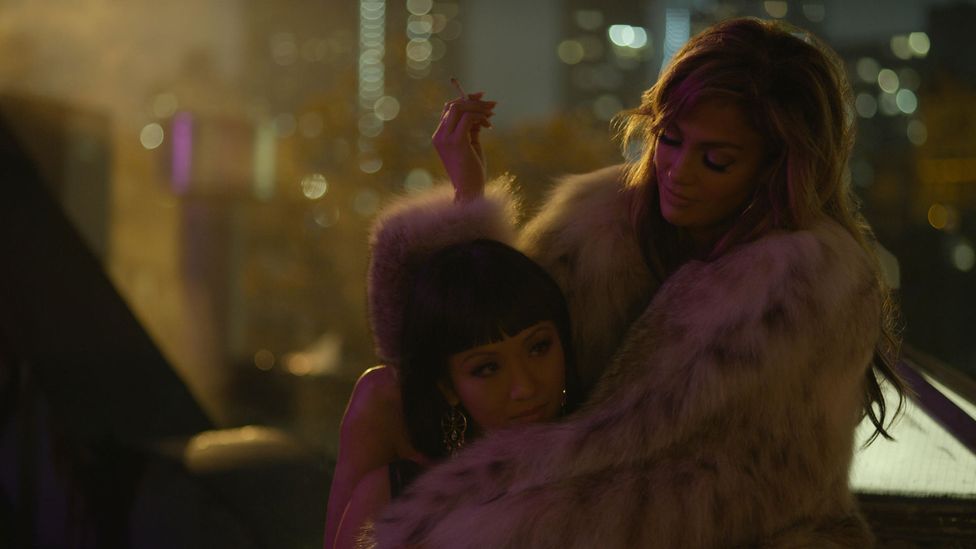
The setting up of her production company, Nuyorican Productions, in 2001 was also a smart move, and according to González Whitaker, allowed her to cater for an audience that Hollywood didn’t: “In the US, Latinos as a community go to the movies more and stream more than our counterparts, so there is an audience appetite that isn’t being served and is consistently underserved, and she has been consistent in her output. That speaks again to her business acumen.” 2006’s El Cantante, a biopic on the Puerto Rican musician Héctor Lavoe and his wife Puchi, played by Lopez; 2007’s Bordertown, in which she played a journalist investigating a spate of murders near the Mexico-US border and ¡Q’Viva!: The Chosen, a Latin American-focused TV singing contest: all zoned in on this underserved demographic. (In 2021, the company signed a multi-year deal with Netflix that will begin with the films The Mother and The Cipher, both starring Lopez herself.)
The backlash she contended with
However, there were missteps on the way, the worst of which was 2003’s notorious romantic crime caper Gigli, in which she starred opposite Affleck. It’s hard to find any positives in Gigli, which is objectively a terrible film, from the clunky dialogue to the silly plot. The only thing going for it is the interest of seeing an A-list Hollywood power couple, aka Bennifer, struggling against the weight of their combined celebrity; they announced their engagement just before the film’s release, only to break it off the following year.
The global panning of the much-derided film – which bombed at the box office – came at a time when media coverage of Lopez was at total saturation point; films and albums aside, she had by this point launched a clothing line, perfumes and a restaurant. And with that, negative – and, as Lopez herself has pointed out – misogynistic stories began flooding tabloid and celebrity magazines insinuating she was a controlling “diva” driven by power (For example, one tabloid story alleged she demanded a recording studio change their lightbulbs to low-wattage ones to make her look more “desirable”). When another one of her films, 2005’s An Unfinished Life, failed to land, Roger Ebert of the Chicago-Sun Times remarked that “she is going through a period right now when nobody is satisfied with anything she does”.
[The Superbowl situation was] pretty appalling for her level of accomplishment, not just as a musician, but as an actress and a dancer and producer – Isabel González Whitaker
Lopez has previously talked about suffering “a nervous breakdown” from the stress of putting herself through a gruelling work regime around this time in the early 00s. “I really believed a lot of what they said which was that I wasn’t very good,” she recalls in Halftime. “I just didn’t belong here, why didn’t I just go away? I felt like I was in this really abusive dysfunctional relationship… there were many times when I just felt like ‘I think I’m just gonna quit’.”
Reflecting on this period on a recent podcast, Affleck – who reunited with Lopez in 2021, with them marrying in July – laid bare the darker undertones to the backlash against her, labelling it “sexist” and “racist” and referring to things that were “written about her in ways that if you wrote it now you would literally be fired for saying those things you said”.
Lopez kept plugging away, releasing a Spanish-language album Como Ama una Mujer in 2007, as well as having children with her third husband, Marc Anthony. Her fortunes then took an upturn again in 2011 when she landed a primetime role as one of the judges of American Idol, as well as producing another talent contest, World of Dance, before she embarked on the not small matter of a two-year residency in Las Vegas from 2016.
Bittersweet triumphs
However it was 2019’s Hustlers that truly reminded people what a force she was to be reckoned with. In the true-crime drama – also produced by Lopez – she played Ramona, the straight-talking queen bee of a group of strippers who drugged and robbed Wall Street bankers. It remains a stupendous star performance that is virtuosic in more ways than one – her opening pole-dance scene is a more hardcore display of athleticism than any staged superhero combat.
For a while, during the 2019-2020 awards season, it looked like it might land her a little gold man: she was widely considered a dead cert for a best supporting actress Oscar nomination, having been in contention at the Golden Globes. Indeed, as Lopez does the awards season rounds, the documentary Halftime is clearly geared up for the announcement of her nomination – only for that narrative to fail to come to fruition. The film captured another potent story instead, tellingly cutting to a shot of the actual nominees: a panel of all-white, mostly blonde actors, a favoured archetype with whom she has arguably been at odds for her whole career.
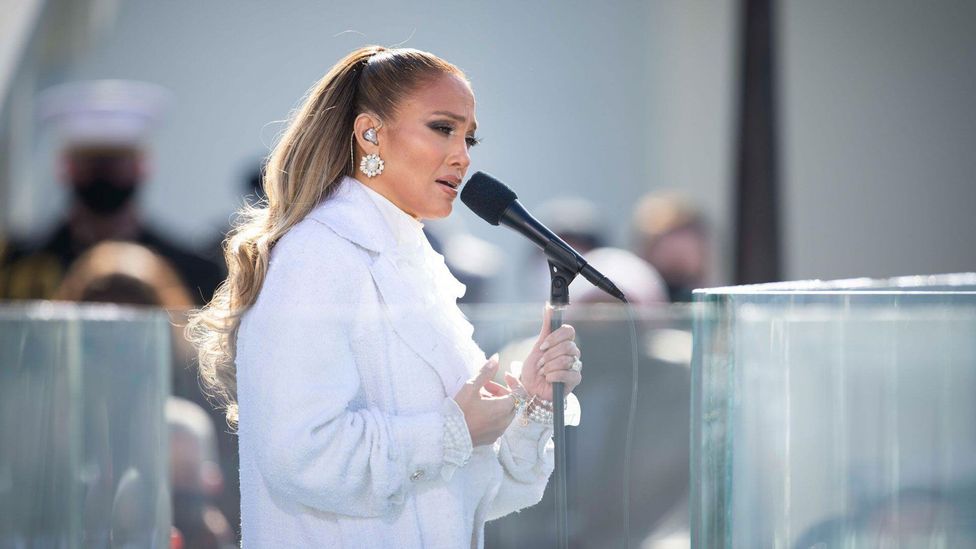
Running alongside her Oscar bid in Halftime is footage of the star in rehearsals for the 2020 Super Bowl halftime show, in which she is shown to be frustrated about having to share the stage with Colombian superstar Shakira – not for any reason relating to Shakira herself, but for the message she believes it sends to the public that she would simply not be “enough” on her own.
She notes unhappily in the film how, for a mini-retrospective of two million-selling artists, they are given just 12 minutes in total: “If it was gonna be a double headliner they should have given us 20 minutes,” she protests. Lopez’s manager, Benny Medina, is more explicit: “It was an insult to say you needed two Latinas to do the job that one artist has historically done.”
González Whitaker believes that Lopez was “1000% justified” in her frustrations. “If you look at it in the larger ecosystem of the Latino population in the US, our communities are still not recognised as being pluralities. It’s pretty appalling for her level of accomplishment, not just as a musician, but as an actress and a dancer and producer. It sends a clear message in the compartmentalising of who she is and who we can be: that there’s only really a limited amount of space or platform or visibility options for our community, so much so that you have to share the stage.”
What Lopez – and Shakira – nevertheless managed to pull off was a superbly bombastic performance. Lopez reminded the audience in even half the paltry allotted time that as well as being the very definition of a “triple threat” – a great actor, dancer and singer – her back catalogue was stuffed to the gills with hits. The organisers had evidently underestimated the power of her pull – it became the most watched Super Bowl half-time show to date.
Perhaps it was her personification of the American Dream that led Lopez to being selected to perform at Joe Biden’s presidential inauguration in 2021. Alongside singing America the Beautiful and This Land is Your Land, she also managed – to the delight of social media – to sneak in a few bars of her song, Let’s Get Loud, in the patriotic ceremony, which seems to sum up her legacy: fighting for her own voice to be heard within the establishment. As she says in her documentary: “No is not an answer, it’s an opportunity”. With upcoming projects of hers including another juicy biopic, The Godmother, about drug lord Griselda Blanco, that Oscar may still come: her own history shows, underestimate her at your own peril.

























































